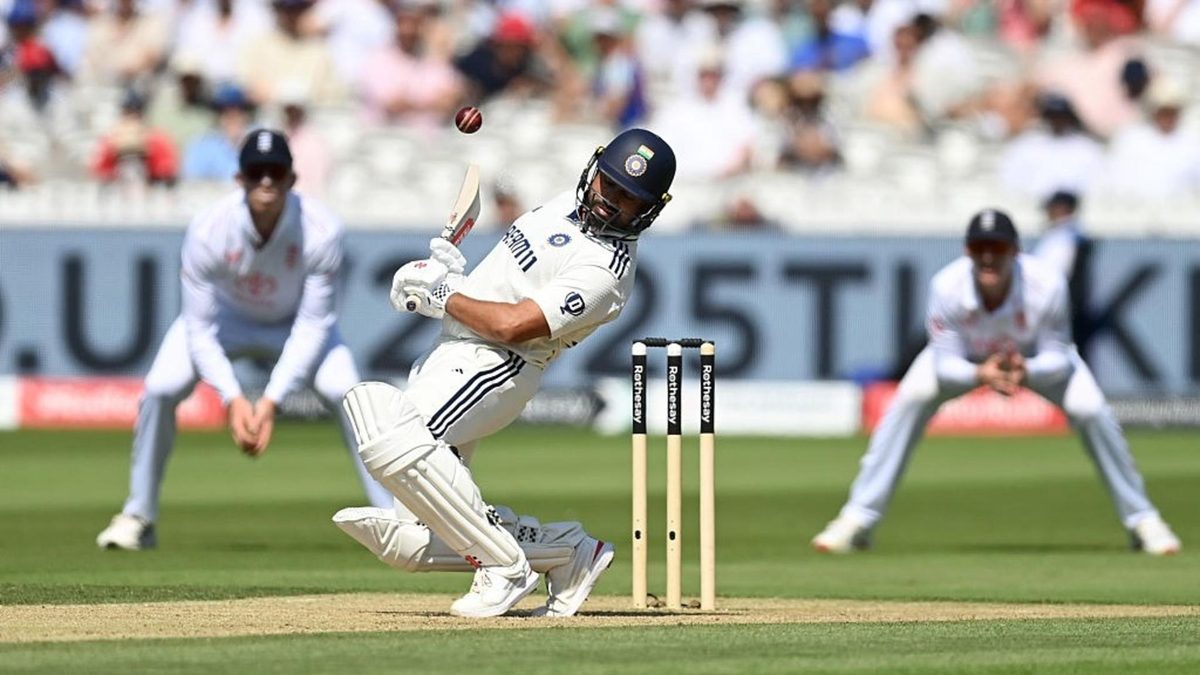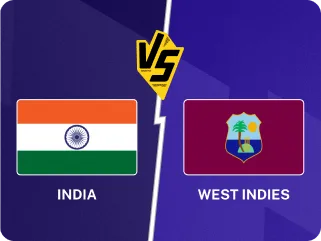
Karun Nair has had a difficult start to the tour of England. Rahul Iyer explores how India should evaluate his performances so far.
Of the 14 different squad members who have taken the field for India in the England series, perhaps none has a story as compelling as Karun Nair; the incredible success of nine years ago, the subsequent fall, and the hard yards to get back to this point – it’s the stuff of dreams.
But halfway through the third Test, Nair’s scores make for difficult reading; 0, 20, 31, 26, 40. After his latest innings at Lord’s, the overriding fan sentiment was ‘another pretty 30-odd, but he needs to start pushing on’.
In all fairness, Nair has had his share of unlucky dismissals. At Headingley, Ollie Pope leapt full-length to his left, and Chris Woakes bent down in his follow-through to complete stunning catches in a game where countless simpler ones went down.
At Lord’s, he was the victim of a Joe Root special, as the England great went down to pluck a ball that was dying on him, left-handed and millimetres from the turf.
Three out of three consecutive blinders being taken is enough for any batter to curse his fortunes.
The bad luck notwithstanding, Nair’s returns have been underwhelming. Not that he was expected to match the heights of his 863-run Ranji Trophy season, but India would have wanted him to cross 50 at least once by this point – especially after filling his boots with 204 against the Lions ahead of the Tests.
The changing face of Test cricket's No.3
Nair batted at No.6 in the first Test, before the Sai Sudharsan experiment was swiftly put on the back-burner. Moving to three at Edgbaston, a more familiar position, Nair has an unenviable role.
The role of Test cricket’s No.3 has been changing. Jarrod Kimber has saidthey are being hunted, Lalith Kalidas has called for their liberation and Telford Vice asked for the ‘real’ ones to stand up.
Indeed, the global average for the No.3 position in men’s Test cricket in this decade is 35.2, the lowest it’s been since the 1910s.
It is well-documented that batting averages have gone down across the board since the start of the World Test Championship, but no position has slipped as much as one-drop – 11.6 per cent down on the 2010s, and 19.0 per cent down on the 2000s.
(All this even after Wiaan Mulder gave the numbers a little push with an unbeaten 367 earlier this month.)
Test batting average by position – last five decades
| Position | 1980s | 1990s | 2000s | 2010s | 2020s | Change from 2000s to 2020s | Change from 2010s to 2020s |
| No.1 | 36.30 | 36.43 | 37.99 | 35.53 | 34.01 | -10.5% | -4.3% |
| No.2 | 33.21 | 34.57 | 36.34 | 34.79 | 31.44 | -13.5% | -9.6% |
| No.3 | 38.07 | 35.99 | 43.41 | 39.81 | 35.18 | -19.0% | -11.6% |
| No.4 | 41.69 | 40.88 | 44.10 | 41.03 | 38.60 | -12.5% | -5.9% |
| No.5 | 36.43 | 38.12 | 40.95 | 41.46 | 38.21 | -6.7% | -7.8% |
| No.6 | 35.20 | 33.36 | 34.35 | 35.04 | 32.04 | -6.7% | -8.6% |
| No.7 | 29.31 | 26.76 | 30.16 | 30.30 | 30.76 | 2.0% | 1.5% |
| No.8 | 21.58 | 20.80 | 23.16 | 22.74 | 20.81 | -10.1% | -8.5% |
| No.9 | 16.76 | 14.71 | 15.94 | 15.84 | 14.36 | -9.9% | -9.3% |
| No.10 | 12.98 | 10.86 | 10.33 | 12.34 | 11.91 | 15.3% | -3.5% |
| No.11 | 8.40 | 7.18 | 8.24 | 8.76 | 8.06 | -2.2% | -8.0% |
England have their own issues with the spot, as do South Africa and Australia. Kane Williamson, perhaps, is the only nailed-on career No.3 in Test cricket today.
Read more: Atypical No.3 Ollie Pope plays archetypal No.3 innings to keep England fighting
Somewhat unceremoniously, Nair has been thrust into the No.3 position, and he is in no position to complain. At this point, the second chance at international cricket, even if he had to bat No.11, would have been welcome.
What’s tricky now, is defining his role. Maybe we simply have to accept that the No.3 isn’t necessarily the position from which batters regularly score big hundreds anymore.
But if a batter isn’t expected to score runs, what are they doing in the side?
Facilitation might be the best way of putting it. In this India team, their best batters outside of Yashasvi Jaiswal (himself an outlier of sorts, as a wildly successful Test opener in this era) are Shubman Gill and Rishabh Pant, who come in at No.4 and No.5.
If India can have Gill and Pant consistently coming to the crease with conditions in their favour, the two of them are more than capable of taking the game away from any opposition.
Read more: Rishabh Pant becomes second wicketkeeper in history to make two hundreds in same Test
In most countries, but even more so on this England tour thanks to the Dukes balls losing shape quickly and the flatter wickets, the threat for batters is usually reduced by the 20-25 over mark. Pant has not been, and will rarely be, called upon this early.
When Gill made 269 & 161 at Edgbaston, he came to the crease in the 24th and 21st overs respectively, both at the fall of Nair’s wicket.
India’s captain arrived in the 26th over during his 147 at Headingley, but that was largely thanks to a 24.5-over opening stand. It would have been even later had Sai Sudharsan lasted longer than four deliveries. In the next innings, Sudharsan did significantly better, playing 48 balls before his dismissal brought Gill in, in the 21st over (he was eventually out for eight).
Batting at No.3 in this series, Nair has lasted 50, 46 and 62 balls so far. His game plan has been uncomplicated; just punish the bad balls. And England have given him a few.
His negotiation of Jofra Archer’s comeback spell was creditable. Archer’s lines were tight, but Nair's bat was tighter – only coming out to pounce on anything overpitched. Both he and KL Rahul left liberally, and swayed well out of the way of anything short.
Also read: Archer's joyous return ushers Woakes towards Test exit
The Root effort to dismiss him eventually came in the 21st over, by which point he had not only survived to give Gill a more convenient entry point, but also scored at a decent clip.
If India do look at it that way, Nair seeing off trickier conditions might well be worth the trade-off for bigger runs if he continued to get out in the 30s and 40s – there are others capable of playing the bigger innings, and they are also partial to having proper batting at No.8.
But all told, Nair is still averaging 32.3 at No.3 this series. Him consistently spending an hour at the crease, has second-order utility for the team, at least in theory. But at what point do India think they can get both sides of the coin from someone else?
Dhruv Jurel could be an alternative, but he might earn a spot for the next Test anyway if Rishabh Pant's finger injury worsens. Sai Sudharsan is the only other realistic contender for No.3 in the squad, and has already been given a go. But given how highly he is rated – evident simply from his selection for this tour – it's not impossible that another middling score for Nair will see him return.
The question is where the team management puts both of them with respect to Nair, on that sliding scale between consistently delaying entry points, and occasionally scoring big runs.
From a personal point of view, the question for Nair is this; can he afford to be more adventurous?
Follow Wisden for all England vs India updates, including live scores, latest news, team lineups, schedule and more. The live streaming details for the ENG vs IND series in India, UK, USA and rest of the world can be found here. For Wisden quizzes, head here.








